Wakatobi- It's the Reefs |
At my age comfort means easy. I would like to dive many places but they are too hard. Too hard to get to. Too hard to dive. Too hard to live. I am not up to long jaunts on cramped public transportation, can't seem to savor seedy hotel rooms in out-of-the way third world hellholes and can't seem to fit in the broom closets that most liveaboards laughingly call staterooms. So Wakatobi is my destination..........for reasons that will become obvious.
Ginnie and I get on EVA Air at early dark O'Clock tonight. EVA has the usual sardine clase, the obligatory you-can't-afford it business class and, suprise, a reasonable, if not cheap elite class. This elite class has decent seats, different, but as comfortable as, standard first class seats. The trip from Los Angeles to Taipai takes two lifetimes so elite class is required for my fat, old, creaky body. 19 hours in the air. Ugh! Given that we could get to anywhere in the Caribbean in 8, hours, Hawaii in 5 hours and even Fiji in a little over 9 hours, the question “Why go all that way?” is reasonable.
Simple answer: It’s the reefs!
To be sure Wakatobi is a premier dive operation getting top marks from Ginnie and I from the room to the food and in some cases, like the camera room, the availability of larger than normal tanks and large stable dive boats, it excels beyond any place we have stayed. Still, this is not reason enough to spend an entire day in the air.
It’s not the critters either. Wakatobe is in the triangle of greatest bio-diversity and, Caribbean divers take note, there is a plethora of critters that are unseen anywhere else. At Wakatobe, you will discover more interesting critters than other places in the world but, as any macro photographer knows, there are always new life to find anywhere.
Its reefs.
They are beyond amazing. Imagine the reef tops 100% covered with coral of unimaginable variety stretching as far as one can see……and one can see very far. Nobody can really photograph the reefs in their magnificent magnitude. The human eye can see for 30 meters if the visability permits and the human brain can correct for the water's effect on light but a camera cannot. To show the reef in all its vibrant color one must be very close to the subject. Ginnie, however, tries! Using an Olympus e-620 and a zoom lens that extends from 14mm to 54mm Ginnie is able to capture subjects both large and small. All these pictures are hers. Enjoy!
|
|
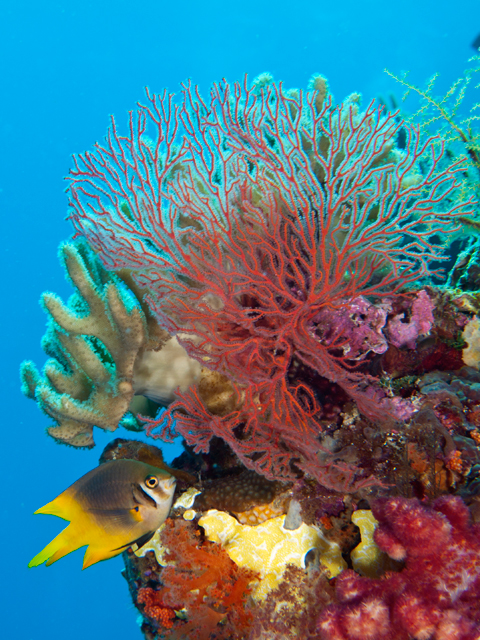 |
There is a dive site at Wakatobi called 38th Fan. The way the story goes is that back in the day of film photography there was a limit of 36 shots. This meant that the photographer must chose and frame his shots very carefully.
One such photographer came across a beautiful fan relatively early in the dive. He carefully photographed it believing it was the most beautiful fan ever. |
|
Surprised, he was, when soon thereafter he encountered an even more beautiful fan. Carefully photographing it he was certain he had captured the primo fan.
Yet Wakatobi was not done with surprises and the photographer came across even more beautiful fans. He photographed each one carefully certain this one must be the best. |
 |
|
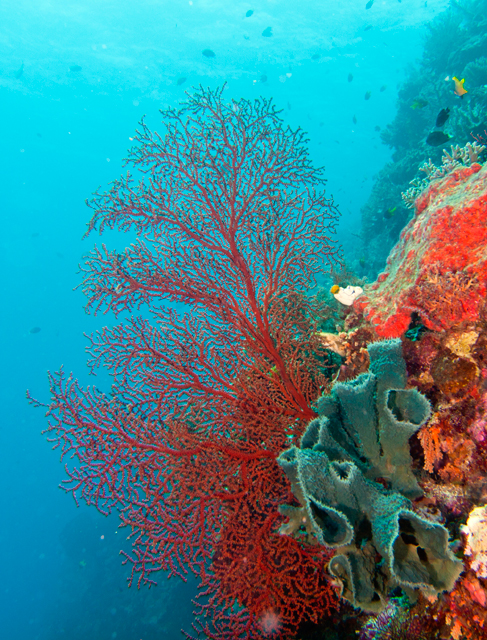 |
Ultimately he reached shot 36, the end of the roll. He then chanced across a most magnificent fan and confidently photographed it with his last shot. However as he turned the corner he found the most ultimate fan. Could he squeeze another picture out of the roll?
Twisting the knob with all his might he advanced the film to the very end and eureka, he photographed the ultimate fan with this 37th shot.
He had gone beyond the boundary, scaled the limits of technology and captured the ultimate fan.
Then, with still half a tank of air left, he encountered the 38th fan……..
...........................................To be continued
|
| ... |
|
|
On to the next reef and a description of some of the corals found at Wakatobi
Not all reef tops are 100% coral covered as you can see here. This kind of expanse of red and orange Cup Coral is relatively common. |
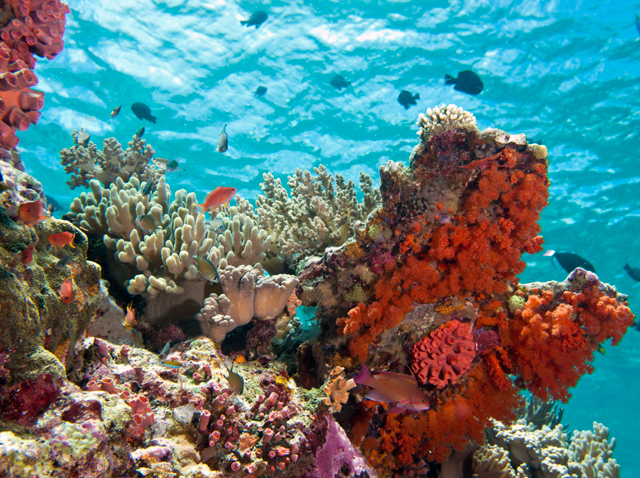 |
|
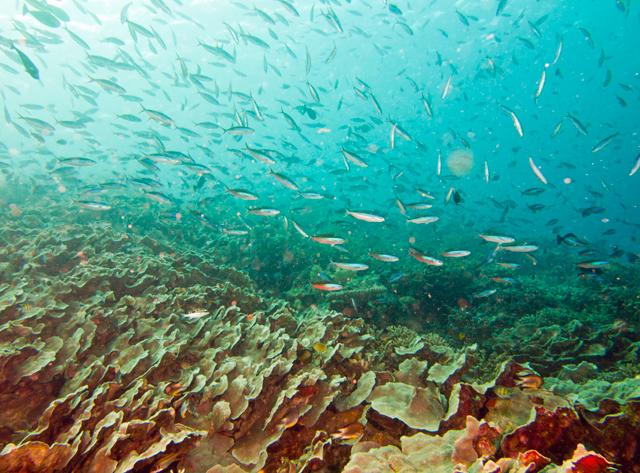 |
Along with Roma, Magnifica and Table Coral, Zoo is one of my favorite dive sites. The expanse of coral here is unbelieveable. One swimms across this Thin Leaf Lettuce Coral for quite a distance after first covering a fair distance over Potato Pillar Coral.
At the bottom is a large Barrel Sponge. At one time a colony of white Mushroom Coral Pipe Fish but they have since left. |
|
At Wakatobi mant of the reef tops are 100% coral covered even down to a suprising depth, The soft leafy Leather Coral (beige in the photo) predominates.
The green is Halimeda Grass. If one is lucky one can find a White Pigmy Seahorse or a Halimeda Leaf Pipe Fish hiding in the grass..
Imagine this view extending for hundreds of meters on a reef top 15 meters wide and extending down 5-7 meters in depth and that is what the eye can see. |
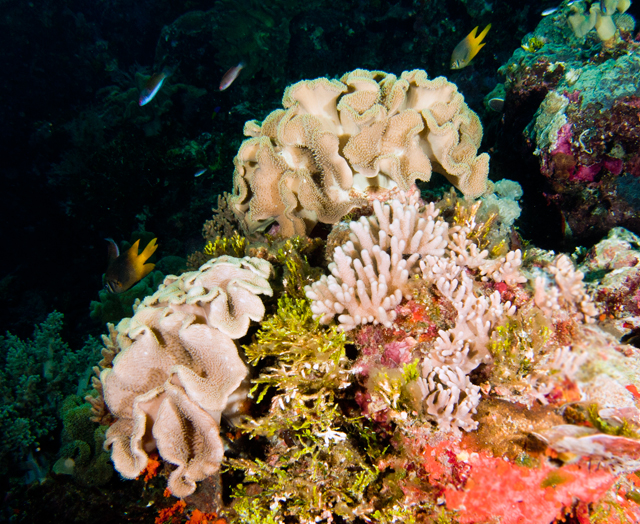 |
|
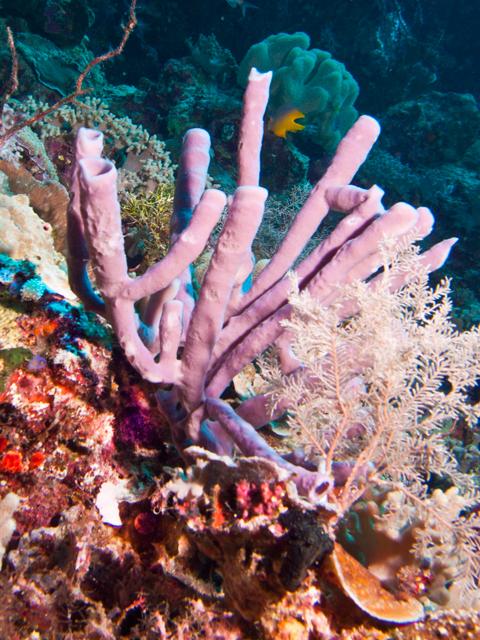 |
In addition to coral, the reefs are decorated with sponges. There are many large Barrel Sponges. They appear brown because they are usually at depth but are really a deep reddish brown. In the cracks of a Barrel Sponge a Hairy Squat Lobster sometimes resides. This is a favorite macro subject for Tom.
This is a Branching Tube sponge. I is one of the few coral reef invertebrates that is blue in color although they range in color from purple to blue, gray, and gray-green. This light pink is unusual.
The tube sponge is one of the most common varieties of sponge to be found on many reefs. Filtered water is ejected through the large openings on the ends. |
|
The reef, however, is not all about the expanse of color found at Wakatobi. Interesting small things abound.
This critter is called a Feather Duster. It is really a worm and looks like the Christmas Tree Worm that is common in the Carribean.
Most dSLR photographers usually shoot either wide-angle or macro shots on a single dive because they choose a specialty lens that can accomplish one task very well but not the other at all.
|
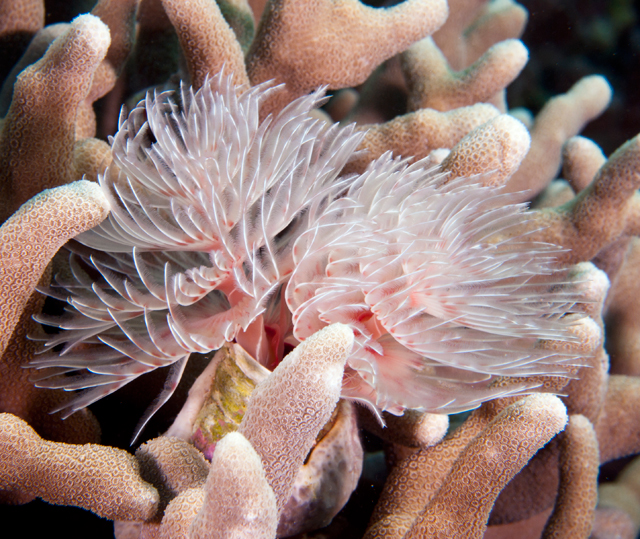 |
|
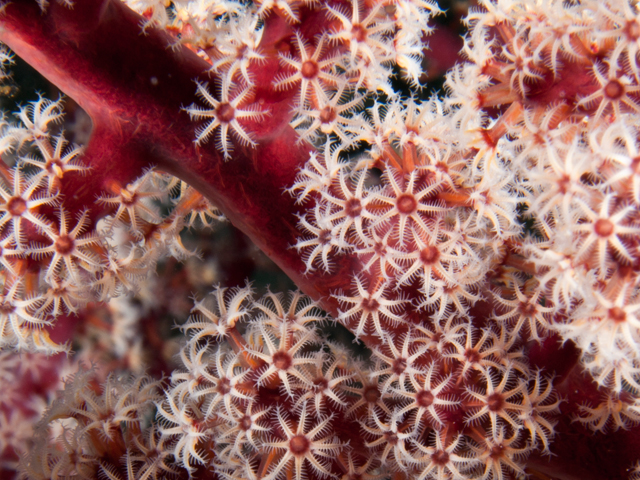 |
Ginnie, however, takes both wide and macro shots with the same lens.
Observe that the previous two shots were taken at the 54mmend of the 14/54 zoom lens while all the previous shots were taken at the 14mm end.
This is a closeup of one of the fans. To see more of this delicate beauty check out Tom's pictures in Wakatobi in Super Macro. |
|
|
This is a Velcro Thingie. It walks. It swims, but most of all it clings to wetsuits if an unsuspoecting diver gets too close.
In areas like Puerta Galera in the Philippines these critters, called Feather Stars, are the main decoration on the reef. They come in many sizes and colors and sometimes hide an interesting Feather star Crab.
At Wakatobi they come in many varieties but are just another decoration on the reef. |
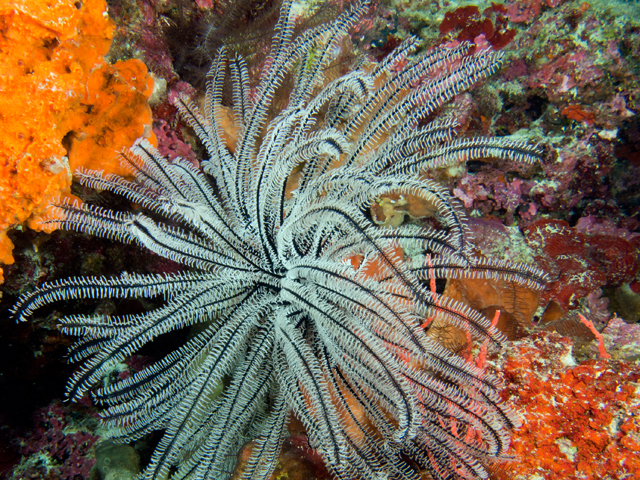 |
|
Back to The 38th Fan-Our Choice
Today, of course, “We don’t need no stinking film”, the motto of Digital Diver.net, so Fan 38, the absolutely, unquestionably most ultimate fan of all was captured quite easily by Ginnie. |
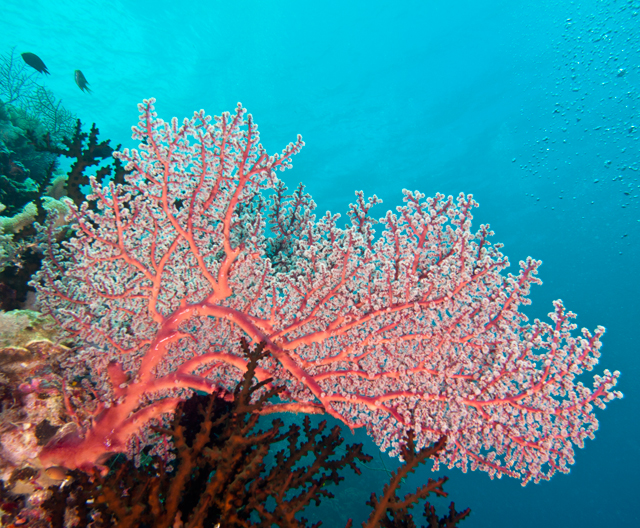 |
|
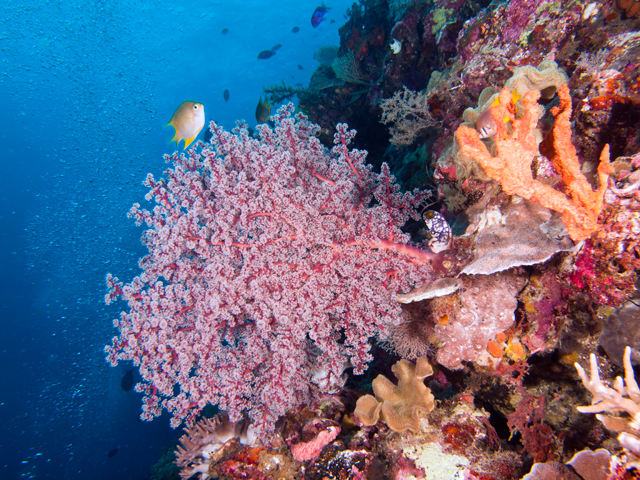 |
As Ginnie floated on, he problem wasn’t lack of air or available shots in her camera. More accurately it was waiting for her husband who typically has his head in the reef photographing something no bigger than a grain of rice.
Still, no problem. There was always another fan to photograph….47…..48…..49. |
|
50..........51.......52..........
Pictures by Ginnie Reynolds. Text by Tom Reynolds based on our 2011 vacation at Wakatobi Dive Resort. |
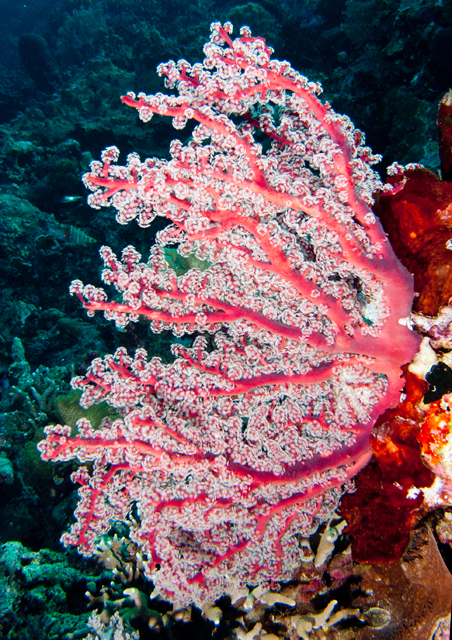 |
|
| |












